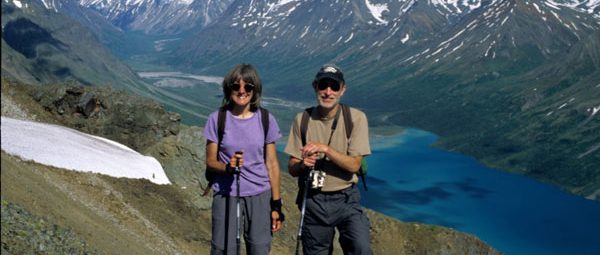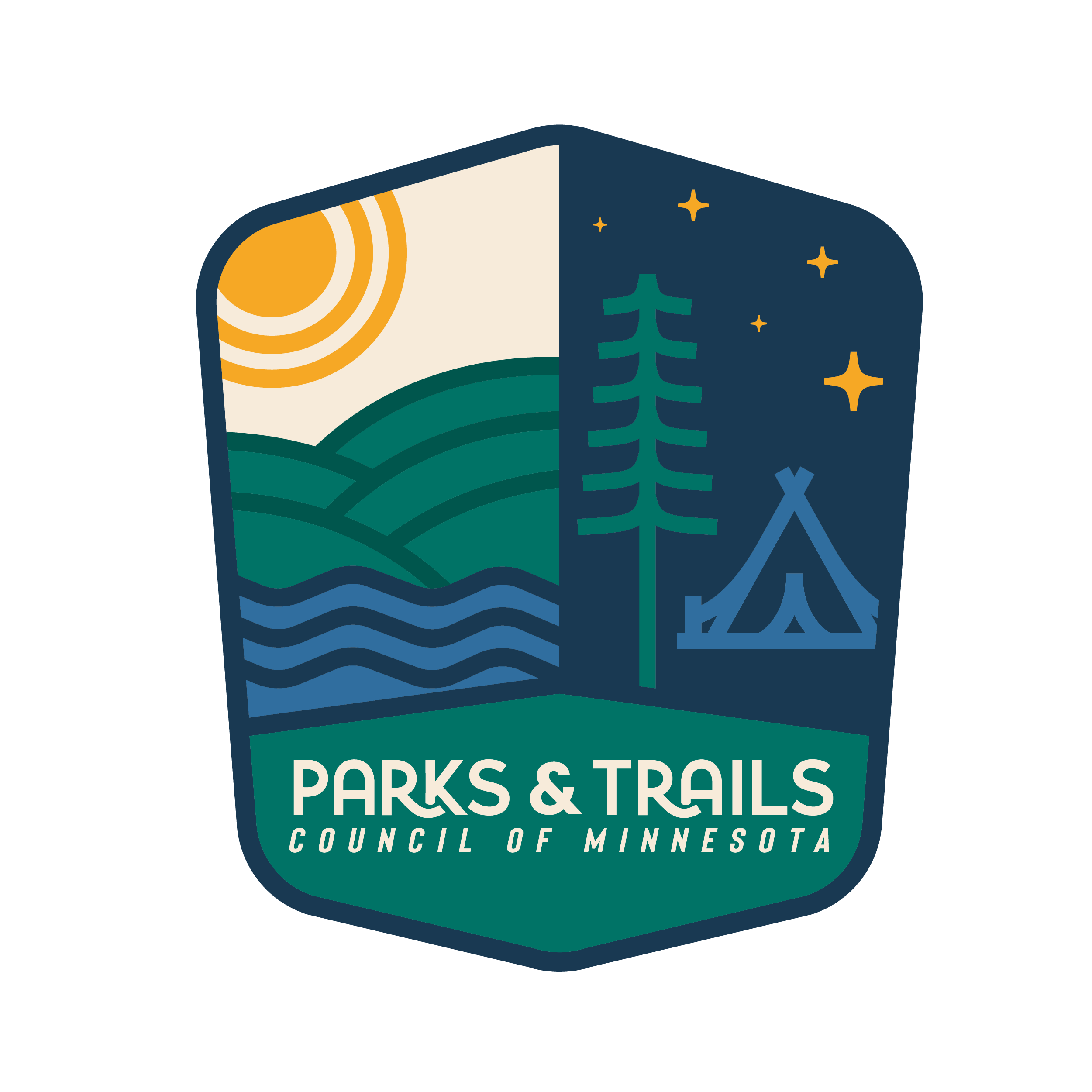- Home
- Reuel Harmon Awardee
- Joan & Mark Strobel

Joan & Mark Strobel
The scientific method for saving natural spaces
Combine a real passion for the outdoors with the methodical, steadfast efforts of scientists and engineers and you have almost unbeatable advocates for Minnesota’s North Shore.
Mark and Joan Strobel, like many Minnesotans, simply enjoyed putting on their boots and, sometimes, their backpacks and heading out to a park or trail. But their scientific background—both work for 3M on such things as “embossed oriented polymer films”—caused them to look beyond the trail at their feet.
“We’d see that there were sites that were not public property, but should be,” said Mark Strobel. “It was that recognition that led us to the project at Pigeon Falls.”
The 120-foot High Falls is the highest waterfall in the state, but in the mid ’80s, when Mark and Joan first hiked it, the falls were on private land within the Grand Portage Indian Reservation. At a tradeshow in Minneapolis, Mark talked with Rick Novitsky of the DNR and told him he thought the falls should be preserved as a state park. The Strobels also talked with Don Davison of the DNR. “We asked, ‘Why isn’t this a state park?’” Mark said, “and they told us to work through the Parks & Trails Council of Minnesota.”
From 1985 to 1989, Mark and Joan Strobel, with no portfolio other than their love for the area, worked to create a new state park. They talked with the private landowner and with tribal, county and state officials. In 1989, the Minnesota Legislature approved establishment of Grand Portage State Park.
To turn privately held land into a public park takes a lot of talking to people, Mark said. “The landowner, the DNR, the local community and government—including state legislators, these are the people who have to say ‘yes.’ What we did was to get them all to say ‘yes.’”
That meant one-on-one conversations, public and private meetings … constant communication. The key to success in those efforts is, Mark Strobel believes, inherent in his and Joan’s personalities and training as scientists: “We’re just straight-forward. Not blunt, but straightforward. You have to be scrupulously honest. If you tell a landowner something, it has to be the truth. If you tell a county commissioner something, it has to be the truth.”
The Strobels didn’t stop at creating a state park; they have been involved in major projects at a number of the North Shore parks. They spearheaded land acquisition projects for the Parks & Trails Council at Tettegouche, helping protect some of the North Shore’s most spectacular lakeshore and waterfalls. They helped in the acquisition of the 80-acre Gold Rock Point at Split Rock Lighthouse. They convinced 3M leaders to donate 310 acres at Crystal Bay and 160 acres at Carlton Peak to the Nature Conservancy, which then donated the parcels to the DNR; Crystal Bay was added to Tettegouche State Park and Carlton Peak to Temperance River State Park.
Mark Strobel is the first to point out that he and Joan were not alone in these efforts. They worked with a team that included DNR officials and staff, the Parks & Trails Council, DNR “friends” who worked in a non-official capacity and people with clout who were active on the North Shore.
“We made a list of everything that we thought should be a park and then prioritized those based on natural features combined with the chances of getting it into the park system,” he said. “We take an engineering approach to this: You prioritize things, then you just do them.”
A key member of the team was Mark’s longtime friend Al Tschida. “At some point, you’re buying land and you have to have an expert,” Mark said. “Al’s one of the best real estate attorneys in the state and he supplied huge amounts of legal services and advice.”
But key for the Strobels was becoming involved with Parks & Trails Council. He considers Martin Kellogg, Sam Morgan, Alden Lind and Bill Morrissey of Parks & Trails Council his mentors, “others who had done this and saw things through and had a passion.”
After more than 20 years of being involved with parks and trails, Mark and Joan are now simply enjoying them. “If it’s in the city, we call it walking; in the country, we call it hiking,” he said. They still like to backpack, but they’re going a bit further afield for that: to Alaska.
Mark urges others who care about the North Shore—or any of the state’s parks and trails—to become active in the Parks & Trails Council. “I don’t know of any other way to be more effective,” he said. “It’s very difficult to directly influence the legislature or the DNR without the Parks & Trails Council. Doing it as a member is more powerful. There’s no other group that does what it does for state parks.”
About Lisa Filter
Tags
News Categories
Recent News
-
Two Friends Groups receive ... August 28, 2024
-
Share your opinion on fundi... August 27, 2024
-
DNR Update: Next Steps in t... August 26, 2024
-
Senator Foung Hawj August 16, 2024
-
Frontenac State Park Associ... August 8, 2024
